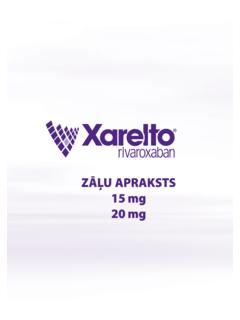Transcription of Management of Abdominal Aortic Aneurysms …
1 Management of Abdominal Aortic AneurysmsClinical Practice Guidelines of the European Societyfor Vascular Molla,*, Powellb, G. Fraedrichc, F. Verzinid, S. Haulone,M. Walthamf, van Herwaardena, Holtg, van Keulena, h,B. Rantnerc, Schlo sserh, F. Setaccii, RiccojaDepartment of Vascular Surgery, University Medical Center Utrecht, Utrecht, The NetherlandsbImperial College, London, UKcUniversity Hospital Innsbruck, AustriadAzienda Ospedaliera di Perugia, ItalyeHo pital Cardiologique, CHRU de Lille, Lille, FrancefSt Thomas Hospital, London, UKgSt George s Vascular Institute, London, UKhYale University - School of Medicine, New Haven, Connecticut, USAiUniversity of Siena, Siena, ItalyjUniversity of Poitiers, Poitiers, FranceSubmitted 4 September 2010; accepted 12 September 2010 KEYWORDSA bdominal aorticaneurysms;Guidelines; Management ;Cl inical practice.
2 Evidence-basedmedicineIntroductionPurpos e of these guidelinesThe European Society for Vascular Surgery (ESVS) appointedthe AAA Guidelines Committee to write the current clinicalpractice guidelines document for surgeons and physicianswho are involved in the care of patients with abdominalaortic Aneurysms (AAAs). Guideline development was rec-ommended in 1990 by the Institute of Medicine to improvedecision making for specific patients circumstances and todecrease the variability in appropriate and inappropriate* Corresponding author. Tel.: 31 887556965; fax: 31 Moll).Eur J Vasc Endovasc Surg (2011)41,S1eS581078-5884/$36 2010 Published by Elsevier Ltd on behalf of European Society for Vascular care between ,2 Appropriate decision-making is critical to achieving excellent Aortic aneurysm disease is complex and hassignificant clinical practice variability, although a validevidence base is available to guide recommendations.
3 Thesignificant increase in the quantity of scientific literatureconcerning Abdominal Aortic aneurysmal disease publishedin recent years along with the number of technical andmedical advances enables guideline recommendations withmore certainty and supporting evidence than increases in health care costs and risks due toindustry and public-driven use of novel treatment optionsmake the current guidelines increasingly clinical situations of patients with AAAs have notbeen the subject of randomised clinical trials. Patient care,however, needs to be delivered and decisions have to bemade in these situations. Therefore, this document alsoprovides guidance for decisions when extensive level Ievidence is not available and recommendations are deter-mined on the basis of the currently available best evidencefor these situations.
4 By providing information about therelevance and validity of the quality of evidence, thereader will be able to locate the most important andevidence-based information relevant to the optimise the implementation of the currentdocument, the length of the guidelines has been kept asshort as possible to enable prompt access to the guidelineinformation. This clinical guidelines document is supposedto be a guide, not a document of rules, and allows flexibilityfor specific patients is the resulting clinical practice guidelines docu-ment and provides recommendations for clinical care ofpatients with Abdominal Aortic Aneurysms including pre-operative, perioperative and post-operative maleorfemalepatientswithasymptomatic, symptomatic or ruptured AAA with fusiformdilatation.
5 This document does not cover patients witha saccular, infected or mycotic AAA or pseudoaneurysmalaortic dilatation. The AAA Guidelines Committee met inSeptember 2009 for the first time to discuss the purpose andmethods. The AAA Guidelines Committee has been consti-tuted withincorporation of members from different Europeancountries, from academic and private hospitals, vascular andendovascular specialists and patients to maximise the supportfor the final guidelines document. Since Europe encompassesa variety of health care systems and political economies,health policy makers were not AAA Guidelines Committee performed a systematicliterature search in MEDLINE, EMBASE and COCHRANE Librarydatabases for each of the different topics that are discussedin this guidelines document.
6 The Guidelines Committee useda grading schema based on levels of evidence and grades ofrecommendation according to the levels of evidence fromthe Oxford Centre For Evidence-Based level of evidence classification provides informationabout the study characteristics supporting the recommen-dation and expert consensus, according to the categoriesshown in Table recommendation grade indicates the strength ofa recommendation. Definitions of the grades of recom-mendation are shown in Table AAA Guidelines Committee aimed to report as muchas possible the calculated estimates of effects with their95% confidence intervals. Every part of the guidelinesdocument has been prepared by at least two members ofthe Committee and has been reviewed by the entireCommittee.
7 The initial guidelines document has beensubsequently reviewed by the AAA Guidelines ReviewCommittee. After incorporation of all comments andrecommendations, the guidelines have been provided tothe members of the ESVS. The final document has beenapproved by the 1eEpidemiologyDefinition of Abdominal Aortic aneurysmsAbdominal Aortic aneurysm (AAA), which comes from theAncient Greek word e rysma, means a dilatation orwidening of the Abdominal aorta. The most accepted defi-nition of an AAA is based on the diameter of the abdominalaorta: an Abdominal Aortic diameter of cm or more,which usually is more than 2 standard deviations above themean diameter for both men and women, and is consideredto be researchers have suggesteddefining Abdominal Aortic aneurysm as the maximum infra-renal Aortic diameter being at least times larger thanthe expected normal infra-renal Aortic diameter tocompensate for individual variation in the diameter of theadjacent can be defined as an Abdominal Aortic diameter cm or more in either anterior-posterior or 2c, Grade and risk factorsPopulation screening studies offer the best evidenceregarding the prevalence of AAA.
8 Several of these havebeen conducted as randomised trials to assess the benefitsof screening (MASS, Western Australia, Viborg and Chi-chester, the latter being the only one to include wom-en).16e19 Other evidence comes from the Rotterdam,Troms and other large epidemiological ,21 Prevalence rates vary according to age, genderand geographical location (Table 3).Level keeping with ethnic and environmental risk factors,a screening study of US veterans (between 50 and 79 yearsold,nZ73,451) showed the highest prevalence of AAA cm was and was found in white male smokersbetween 50 and 79 the aneurysm populationscreening data (Table 3) are now dated and there is littlecontemporary information for 21st century prevalence,although there are some indications, at least in the USA,that the admission rate for aneurysm repair is risk factors for AAA are advanced age, malegender and positive family history for AAAespecially in male first-degree relatives, is also Moll et increased risk for is a strong riskfactor (odds ratio> in all studies), the associated riskbeing much higher than for either coronary artery diseaseor ,24,28 Level , the following factors have been associatedwith AAA development.
9 History of other vascularaneurysms,32e35greater height,22coronary arterydisease,22,33cerebrovascular disease,34atherosclerosis,22hypercholest erolemia,20,22and hypertension,21,22,35,36although the data for some of these factors are inconsistentand studies may not have been subject to multivariateadjustment, so that spurious associations may have beenreported. More recently, genome-wide association studieshave demonstrated the association with variants on chro-mosome 9p21. The presence of rs7025486[A] in the DAB21 Pgene is associated with a 20% increased risk of developingAAA, odds ratio [95%CI ].37 Black or Asian raceand diabetes mellitus are negatively associated with ,38 Level evidence for other risk factors including homo-cysteinemia, high levels of lipoprotein (a) and plasminogenactivator inhibitor-1 is very historyAAA growth ratesThe reported average growth rate of AAAs between 30 and55 mm ranges from to cm per year.
10 Larger AAAT able 1 Level of evidence Therapy/Prevention, Aetiology/Harm PrognosisDiagnosis1aSR (with homogeneity) of RCTsSR (with homogeneity) of inception cohort studies; CDRvalidated in different populationsSR (with homogeneity) of Level 1 diagnostic studies; CDR with 1b studies from different clinical centres1bIndividual RCT (with narrow Confidence Interval) Individual inception cohort study with > 80% follow-up; CDR validated in a single populationValidating cohort study with good reference standards; or CDR tested within one clinical centre1cAll or none All or none case-series Absolute SpPins and SnNouts 2aSR (with homogeneity) of cohort studies SR (with homogeneity) of either retrospective cohort studies or untreated control groups in RCTs SR (with homogeneity) of Level >2 diagnostic studies 2bIndividual cohort study (including low quality RCT; , <80% follow-up)Retrospective cohort study or follow-up of untreated control patients in an RCT; Derivation of CDR or validated on split-sample only Exploratory cohort study with good reference standards; CDR after derivation, or validated only on split-sample or databases2c"Outcomes" Research.



